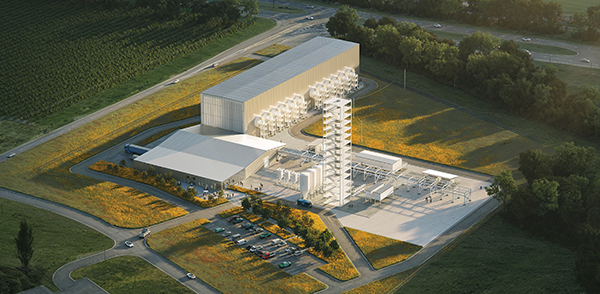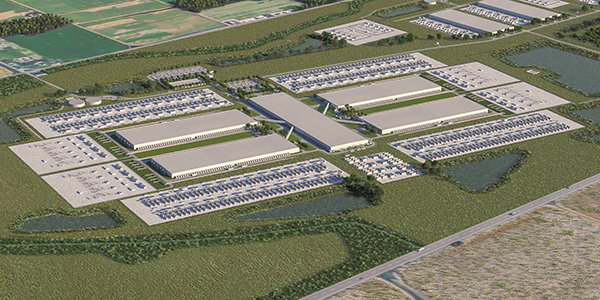Louisiana has a long tradition as an oil and gas state, with reliable, low-cost energy prices, an expansive port infrastructure and transportation systems to match.
But that’s where Louisiana’s story begins, not where it ends.
Since her 2024 appointment by Governor Jeff Landry as Secretary of Louisiana Economic Development (LED), Susan B. Bourgeois has championed the state’s commitment to what she calls the “energy addition” — investments that supplement, not replace, legacy energy sources.
The message to energy companies operating in Louisiana and those looking for new opportunities is: The fundamentals that have long made the Bayou State attractive for the Shells and Exxons of the world also make it attractive for energy innovators. That’s why LED continues to be so aggressive in leveraging the state’s port and pipeline infrastructure, central location and access to international markets via the Gulf of Mexico to diversify an energy sector as important to the state’s future as its past.
“What hasn’t changed — and will not change — is Louisiana’s commitment to being a leader in energy investment and innovation,” said Bourgeois. “It’s not just about traditional energy anymore. We remain an oil and gas state, and proudly so. But we are uniquely positioned to take advantage of more types of energy than anyone else.”
Surging energy investments are just one of the reasons economic momentum and optimism are at an all-time high in Louisiana. New leadership has given way to a new mindset focused on operating at the speed of business in the pursuit of what Bourgeois refers to as her agency’s Five Pillars of Prosperity:
• Position Louisiana to compete and win.
• Ensure every Louisianan has the opportunity for ever-growing wages.
• Create thriving regions today that are well-positioned for tomorrow.
• Optimize Louisiana’s legacy industries to lead in the future, as they have in the past.
• Drive Louisiana’s entire business ecosystem toward growth, innovation and global impact.
The results have been immediate. The past year was transformative for the Louisiana economy. Governor Landry’s pro-business policies spurred significant investments in energy innovation, new emissions reduction technologies, advanced manufacturing and technology. Foundational changes to the state’s tax code and economic development organizational structure have Louisiana poised for additional growth in 2025 and beyond.
Energy is Booming

Louisiana helped pioneer the “all-of-the-above” energy strategy. Its support of new players in the sector has resulted in more than $61 billion of energy and emission-reduction capital investments since 2018. These investments represent nearly 40 projects in seven years, 26,000 direct and indirect new jobs and tens of thousands of construction jobs.
Some of that new investment has been driven by the maturation of carbon capture and sequestration technology. Louisiana is uniquely suited for storing carbon deep beneath the earth’s surface due to an expansive underground pipeline network and unique geology. The EPA granted Louisiana authority to regulate carbon capture in 2024, allowing the state to simultaneously exert more oversight and expedite permitting processes that previously took years to complete. New investment has followed.
Bourgeois often refers to the state’s carbon capture advantages as “rocks, rules and movement,” referring to the state’s self-regulated permitting authority (rules), ideal underground formations (rocks) and the infrastructure already in place to transport captured carbon dioxide safely underground (movement).
Notable 2024 project wins that help underscore Louisiana’s leadership in the energy addition space include:
• Climeworks’ $50 million investment will expand the state’s direct air capture hub into southwest Louisiana.
• Heirloom Carbon Technologies’ $475 million investment will establish North America’s second direct air capture facility.
• Woodland Biofuels’ $1.35 billion investment in a renewable natural gas plant.
• UBE Corporation’s $500 million investment will establish a facility for lithium-ion battery manufacturing for electric vehicles.
Natural and Strategic Advantages
One thing has not changed: Louisiana continues to combine natural and policy-based competitive advantages to secure business investment. Bourgeois and Governor Landry are committed to creating a new toolbox of best-practice programs to supplement a pair of stalwart business incentives:
• The Industrial Tax Exemption Program (ITEP) continues to be a deciding factor for manufacturers considering expansion or relocation projects.
• FastStart, LED’s nationally recognized workforce development program, continues to set the pace for cutting-edge, customized training and talent attraction at no cost to participating companies. In 2024, Business Facilities placed FastStart in the top two of its customized workforce development program rankings for the 15th consecutive year.
Louisiana’s most powerful business advantage, of course, is God-given: location. The state’s central location in the southern U.S. and proximity to the Gulf of Mexico and the Mississippi River provide speed to domestic and global markets that other states cannot match. The state has built on this advantage with ongoing transportation logistics investments, continually optimizing its unique integrated network of interstates, railroads, pipelines and ports. That infrastructure is one of the main reasons Louisiana has maintained its standing as the number one state for per capita foreign direct investment (FDI) every year since 2008.
The state’s abundant natural resources also enhance its appeal. From timber to natural gas and mineral deposits, Louisiana offers raw materials that are essential for industries such as renewable energy, advanced manufacturing, chemical processing and carbon capture. These resources, combined with the state’s highly-trained workforce and decades of expertise in energy production, create a unique ecosystem for innovation and growth.
Louisiana Forward

Support from policy-makers has also been key to setting up Louisiana to win. In June, Governor Landry signed the bipartisan “Positioning Louisiana to Win Bill,” which reorganized LED’s leadership and departmental structure and created a private sector-led board to support the efforts of staff. The new Louisiana Economic Development Partnership (LEDP) is charged with developing a new strategic plan for economic growth – on track for completion in early 2025 – and to hold the agency responsible for meeting the plan’s objectives.
The legislature also made good on its “speed of business” pledge by passing legislation in 2024 that incentivized new investments in data centers with a sales tax credit on qualifying equipment purchases. Louisiana appeals to data center developers because of the state’s lowest industrial electricity prices in the nation, abundant large-scale industrial water availability and certified development-ready sites in every region of the state.
The legislation has already paid dividends: In December 2024, Meta announced it would invest more than $10 billion to build its largest AI-optimized data center in the world in Louisiana. Site prep for the four million square-foot facility on 2,250 acres of rural farmland in northeast Louisiana is underway, and construction will continue through 2030. Once operational, the data center is expected to employ more than 500 people, resulting in an additional 1,000 or more indirect jobs and 5,000 construction jobs at peak.
Perhaps most significant of all is the legislature’s willingness to tackle the complex challenge of tax reform at a special session in November 2024. The “Louisiana Forward” package that ultimately passed reduces the rates for corporate income tax (from 7.5 percent to 5.5 percent) and personal income tax (from 4.25 percent top rate to three percent flat rate) and eliminates the corporate franchise tax. The Tax Foundation estimates the changes will move Louisiana from the bottom 10 to the top 25 of its state business tax rankings, a potentially remarkable one-year reversal of fortunes.
Bourgeois is quick to point out that the new leadership team is just getting started. On the policy priority list for 2025: a new, more broad-based job creation program, a discretionary incentive fund that is less restrictive than previous incentives and more customizable to the needs of business and communities and a significant site acquisition fund to expand the state’s inventory of certified sites.
Going forward, Louisiana is better positioned to win than ever before, whether it is in traditional sectors like energy and agribusiness or in emerging sectors like bioscience and artificial intelligence (AI) innovation. The fundamentals that Louisiana has historically had remain strong, and a new pro-business approach on policy has put the economic turnaround the state previously found so elusive firmly within reach.
Read the full running list of projects and project details at OpportunityLouisiana.com/key-industry/energy. T&ID
